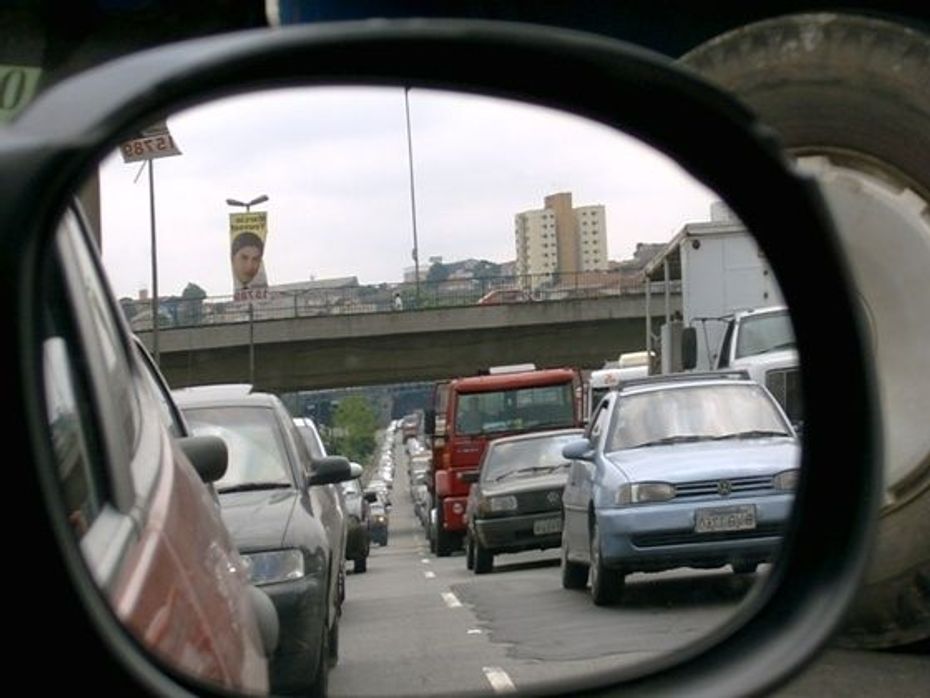
Things New Honda Amaze Needs To Take On 2024 Maruti Suzuki Dzire
- Nov 17, 2024
- Views : 7891


Japanese car maker Honda has announced that it has developed the world’s first technology that can predict a traffic jam before it even starts! This is done using an onboard system fitted to Honda vehicles that monitors the acceleration and deceleration pattern of a vehicle, which is then used to create a colour-coded rating that tells motorists to improve their driving pattern to avoid creating a traffic jam. Honda believes that volume of cars is not what creates traffic jams, it’s the way they are driven. Changing the way people drive could possibly put an end to traffic jams altogether.
Aside from wasting time, traffic jams also cause increased vehicular emissions and fuel consumption because of the stop-and-go nature of traffic. (Due to the laws of physics, a vehicle uses more energy to move from standstill than to increase its speed while on the move.) Also, constantly increasing and decreasing the vehicle’s speed raises the risk of rear-end collisions if the driver behind does not brake in time.
Honda looked towards motor racing to find a key to avoiding traffic jams. That smoothness is the key to winning a race can be applied on the road too where drivers can maintain a smooth and gradual driving style to avoid collisions and not make sudden manoeuvres that slow down other road users.
Honda claims that the new traffic jam prevention system has the potential to raise average speed of vehicles by as much as 23 per cent and improve fuel efficiency by 8 per cent.
The system aims to create an ideal situation by suggesting a particular driving style to avoid causing a traffic jam. Individual systems on vehicles can be connected to cloud servers that communicate with similar systems on other vehicles to bring a driver in sync with vehicles ahead by automatically switching on the vehicle’s Adaptive Cruise Control.
Honda will begin testing the system on public roads during May and June 2012 on the roads of Italy and Indonesia to study the real world effectiveness of the technology.
The National Highway Traffic Safety Administration (NHTSA) in the US is testing a similar system called Vehicle-To-Vehicle (V2V) on 3,000 test vehicles plying on its roads. The NHTSA is monitoring the performance of the system and driver reactions to V2V warnings. The NHTSA has also proposed other automatic features such as automatic throttle cut-off and automatic braking to streamline the process.
While the idea is very noble, automatic braking and throttle cut-off could create potentially dangerous situations where a driver may be able to avoid a collision by doing the opposite of what the system is trying to do.
In places like India, however, mere slowing down of vehicles will not eliminate traffic jams. The ideal system here would have to integrate sat-nav, indicators, steering, brakes, throttle cut-offs and on-board cameras to ensure there are no sudden manoeuvres that can potentially cause tail-end collisions. In essence, making a vehicle follow its sat-nav’s directions and change lanes in time is the only solution to avoiding traffic jams, apart from poorly maintained vehicles breaking down and blocking a lane on the road.

Things New Honda Amaze Needs To Take On 2024 Maruti Suzuki Dzire

New 2024 Honda Amaze Arrives In India At Rs 8 Lakh

10 Features The New Honda Amaze Could Get Over The Current Model

LEAKED! Check Out Real-life Images Of The All-new Honda Amaze

What Is New In New Honda Amaze Compared To Old Model? We Explain!

2024 Honda Amaze: Here’s What Each Of Its 3 Variants Has To...

Next Generation Honda Amaze Launch Tomorrow: 5 Things You Need To Know

New Honda Amaze: 10 Features It Could To Get From The Elevate SUV

You Can Now Unofficially Book The New Honda Amaze At Select...

Mahindra BE 6e and XEV 9e: Unleashing An Electric Revolution
India's largest automotive community
 2024 Camry vs Prius: An In-depth Comparison Of The Premium Toyota Sedans
2024 Camry vs Prius: An In-depth Comparison Of The Premium Toyota Sedans
 Nissan, Honda And Mitsubishi Motors Ink MoU for Joint Holding Company – A New Era in Mobility
Nissan, Honda And Mitsubishi Motors Ink MoU for Joint Holding Company – A New Era in Mobility
 India-spec MG Cyberster’s Power Figures Revealed, Boasts Supercar-level Performance!
India-spec MG Cyberster’s Power Figures Revealed, Boasts Supercar-level Performance!
 Upcoming Hyundai Cars Expected In 2025: Creta EV, Venue EV, 2025 Tucson & Ioniq 6
Upcoming Hyundai Cars Expected In 2025: Creta EV, Venue EV, 2025 Tucson & Ioniq 6
 Toyota Camry
Rs. 48.00 Lakh
Toyota Camry
Rs. 48.00 Lakh
 Honda Amaze
Rs. 7.99 Lakh
Honda Amaze
Rs. 7.99 Lakh
 Audi Q7
Rs. 88.66 Lakh
Audi Q7
Rs. 88.66 Lakh
 Mahindra XEV 9e
Rs. 21.90 Lakh
Mahindra XEV 9e
Rs. 21.90 Lakh
 Mahindra BE 6
Rs. 18.90 Lakh
Mahindra BE 6
Rs. 18.90 Lakh